7 Yoga Poses That Are Safe If You Have Knee Pain + Easy Modifications

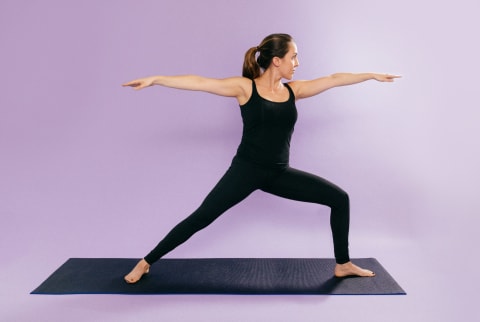
Whether you injured your knee recently or are suffering from chronic knee pain, it can be tough to find ways to move your body without making things worse. If your injury is new, it may be helpful to take a short break or check in with a physical therapist or doctor. If you're starting to get back into the swing of things, yoga can be a great way to slowly incorporate strengthening and mobility1.
Key aspects to help support knee pain.
While there are a lot of structures in the knee that may require specific TLC, there are some key aspects that could help speed up and support your recovery process:
- The knees are in a very tricky position between your feet and your hips, so they often take the brunt of impact. Addressing the mobility of your hips2 can help soften the blow if you start to engage in higher-impact activities, even when walking!
- Hip strength has also been found to be a risk factor for sports-related knee injuries. While we aren't all playing sports on a daily basis, most of us do have to move around a bit to navigate daily life. Strengthening the muscles around the knees will essentially take some load off the joint itself in whatever activity you like to do.
- Improving balance3 similarly makes the ankle, knee, and foot joint work together for better proprioception4, body awareness, and stability. If you think about it, every step you take is essentially standing on one leg but repeatedly and really fast. The more balance you have, the less your knees will have to work to keep you standing up!
Things to keep in mind or modify:
Avoid hyperextending or "locking out" your knee.
Keep the knee from caving inward.
Always think of aligning the knees to stack right over the ankle. While everyone's body structures are different and may vary in degree, keeping them mainly in line will prevent any excessive pressure on the inside ligaments of the knee. The more you strengthen your hips, the easier this will be!
Listen to your body!
My rule of thumb is, "move to discomfort but NOT pain." What this means is movements that feel like your muscles are working or being stretched are mainly a good thing. Movements that are painful or cause your pain to worsen for a prolonged period of time maybe should be avoided. If you don't know which one you fall under, stay on the cautious side or consult a professional!
7 safe yoga poses if you have knee pain or bad knees:
Bent Over Big Toe Pose
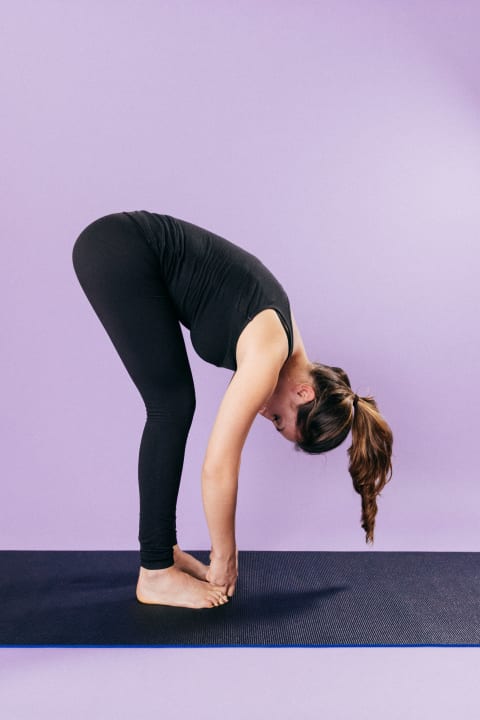
- Allow a generous bend in the knee first, so you can start with a long spine.
- Keep weight in the middle of the feet.
- Make peace fingers and hook them to the inside of the big toe.
- Pull the head to the knees allowing elbows to go wide.
Modifications:
- Use blocks under the hands if the ground is far away.
- Make sure you create space between the shoulders and ears to avoid neck tension.
Warrior II

- Bend into the front knee, keeping knee in line with ankle.
- Back foot should be at a 90-degree angle, with front heel in line with back heel or arch of foot.
- Ground down into the front heel to fire up your front glute.
- Spiral back inner thigh inward to keep back leg straight.
Modifications:
- Only bend as deeply as is comfortable.
- Can flip palms upward if it feels like a lot of tension in the neck.
Chair
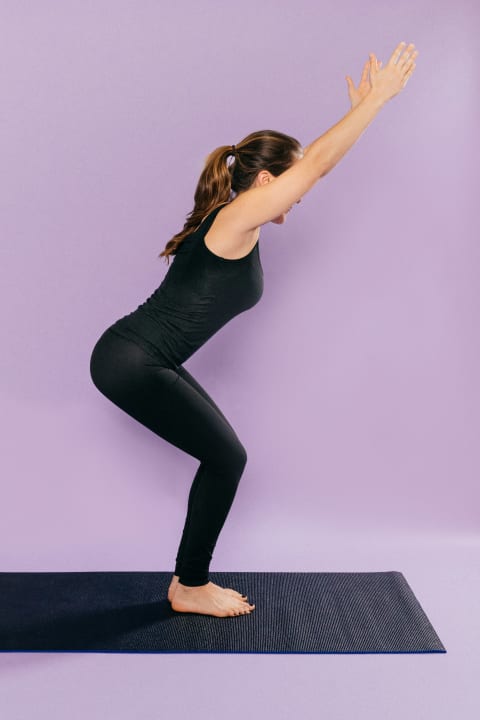
- Bring feet hips-width distance (this foot position is to allow greater focus on hip strength), continuing to pull knees away from midline so they stack over ankles.
- Pull the low belly into spine and sit back.
- Toes should be visible still with spine keeping length.
Modifications:
- If shoulders are tight, reach forward instead of keeping biceps by ear.
- Can use a block between the thighs for greater awareness of hip activation.
Bridge
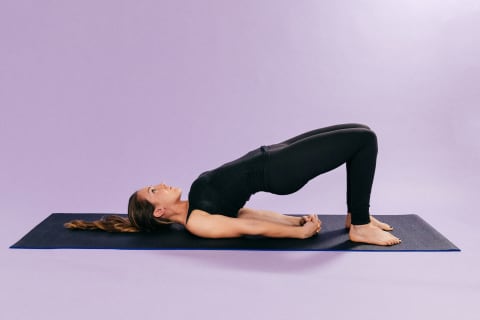
- Bring feet hips-width distance with knees stacked on ankles.
- Push through the heels and lift the hips, keeping the tailbone reaching toward the feet.
- Lift up high enough to only have the midback lifted from the ground.
- Ensure you have enough space between the neck and chest for a tennis ball to fit.
Modification:
- Use a block under the sacrum, the flat bone at the base of your spine for a more supportive bridge.
Plank Pose
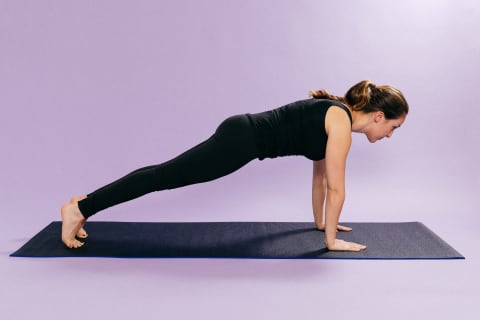
- Can be done on forearms or hands.
- Pull the low belly away from the ground and squeeze the glutes.
- Fire up through the fronts of the thighs to pull kneecaps away from the ground.
- Push the ground away with hands and feet.
Modification:
- Can be performed on knees if comfortable, but keep toes tucked and on the ground.
Supported Tree Pose

- Starting in standing, begin to shift weight onto one foot.
- Place the ball of the foot on the ground or a block, and turn the knee out so the heel can rest on your ankle or shin.
- Push into your standing leg to keep the hips level.
- Bring hands to heart center and down by the sides.
- You can eventually work to bring the foot up higher on the leg, but never place the foot directly on the knee joint.
Supported Reclined Bound Angle
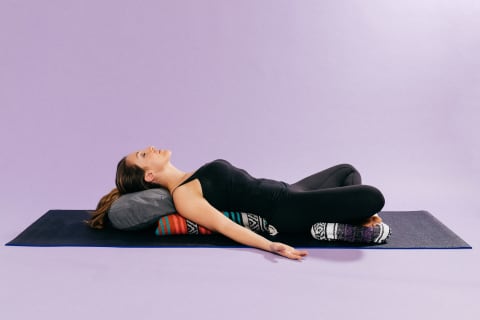
- Lie on your back, and bring the soles of the feet to touch.
- Use blocks, pillows, or blankets so that the knees can be supported in a way that feels open with your muscles gripping.

Jessica Moy, DPT, is a physical therapist turned mind-body wellness coach and yoga instructor. After graduating from the University of Maryland with her Doctorate in physical therapy, she found there was a missing component to the physical healing her clients were looking for. As a prior athlete herself, her experiences with rehabilitation also left out the emotional and mental demand that came with it. From there she developed her holistic approach to well-being through certifications in yoga (E-RYT) and mind-body therapy based in somatic and experiential teachings with eastern philosophy weaved throughout.
Now Jessica helps people reverse engineer the process of accessing fuller living by tapping back into their bodies to better understand their own emotional, mental, and spiritual health. Her hope is to revolutionize the perspective of well-being by helping people discover how the body can tell us so much more than just its physical state. Jessica continues to share her knowledge and virtual services on her website and through Instagram @drjessmoy_wellness and Facebook @drjessmoywellness.